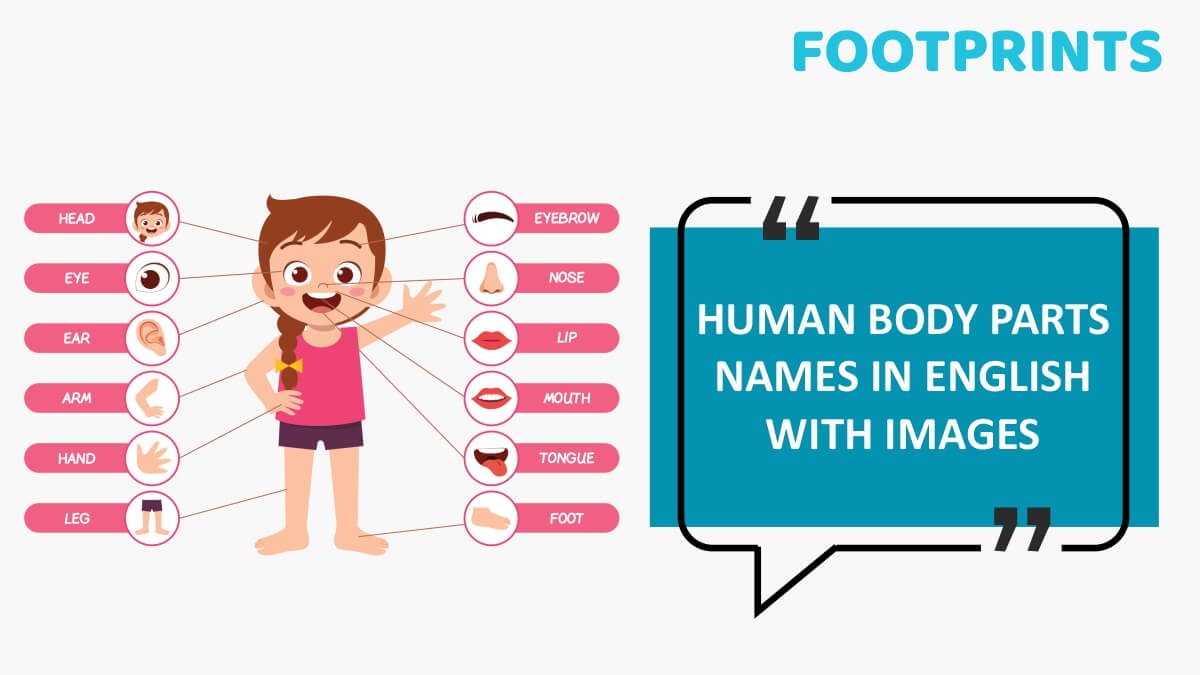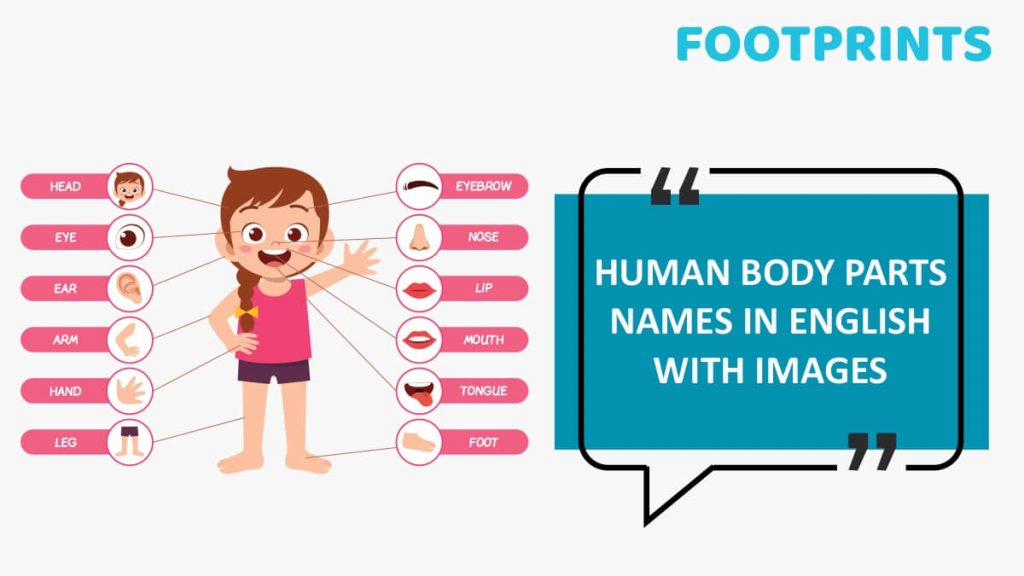

Comprehending the human body and its diverse components is pivotal in a child’s education. This knowledge fosters a fundamental understanding of their physicality and equips them with the wisdom to make informed choices concerning their health and overall well-being. In this blog post, we deeply dive into the captivating realm of body parts, unveiling their English names. We shall delve into both the external features and internal organs, presenting an all-encompassing handbook tailored for parents enthusiastic about imparting this knowledge to their children. Here are the many ways Preschool and Daycare plays an important role in preparing children for their academic years and life. By the conclusion of this article, you’ll possess the insights and resources required to actively involve your child in exploring the human body.
The Importance of Understanding Body Parts
Understanding body parts is not only important for medical professionals but also for parents and children alike. It lays the foundation for a child’s understanding of their physicality and helps them navigate the world around them. By knowing the names of their body parts, children can effectively communicate any discomfort or pain they may be experiencing, enabling parents to provide appropriate care. Additionally, knowledge of body parts promotes body positivity and self-acceptance as children learn to appreciate the uniqueness and beauty of their bodies.
Exploring External Body Parts
The human body is a complex system consisting of numerous external body parts. These parts serve various functions and contribute to our overall well-being. This section will explore major external body parts like the head, arms, legs, and torso. Detailed descriptions of each body part, accompanied by images, will be provided to assist parents in teaching their children the names and functions of these parts. Through interactive discussions and activities, parents can enhance their child’s understanding and retention of this information.
Let’s Begin with the Head and Facial Features
1. Eyes
Eyes are what allow us to see the beautiful world around us. We use them to read, play, and explore. Can you blink your eyes? It helps keep them moist and healthy!
2. Ears
Ears help us hear sounds like laughter, music, and our friends talking. They’re like our built-in listening devices! Try wiggling your ears for some fun!
3. Nose
The nose lets us smell delicious food, beautiful flowers, and even the rain. It also helps us breathe and stay healthy. Take a deep breath through your nose!
4. Mouth
Our mouth is for eating yummy food and speaking kind words. Smiling and laughing also happen here. Can you give a big smile to brighten someone’s day?
Moving on to the Upper Body
1. Shoulders and Arms
Shoulders and arms help us hug our friends, carry our school bags, and throw a ball. They’re like our helpful buddies for various activities!
2. Chest and Back
The chest protects our hearts, while the back helps us stand tall and straight. Remember to stand like a superhero to keep your back strong!
3. Hands and Fingers
Our hands and fingers are super important! We use them for writing, drawing, eating, and giving high-fives. Count your fingers and wave hello!
Now, Let’s Explore the Lower Body
1. Legs and Feet
Legs and feet help us walk, run, jump, and dance. They’re like our trusty companions for all the adventures we have every day. Can you hop on one foot?
2. Hips and Waist
The hips and waist hold our pants up and keep us steady when we move. Let’s wiggle our hips and have some fun!
Learning about our body parts is like solving a cool puzzle. As we understand each piece, we appreciate how it all fits together to help us live our best lives. Stay tuned for more exciting adventures in learning about our amazing bodies!
Getting to Know Internal Organs
While external body parts are visible and tangible, internal organs are vital in keeping our bodies functioning correctly. Understanding the names and functions of internal organs is essential to a child’s education. This section will delve into the fascinating world of internal organs, including the heart, lungs, kidneys, and digestive system. We will explain the functions of each organ in child-friendly language, making it easier for parents to convey these concepts to their children. By using age-appropriate images and illustrations, parents can help their children visualize the location and purpose of each organ.
Let’s Start with Our Vital Organs
1. Heart
The heart is like a super strong pump that pushes blood throughout our body. It keeps us alive and healthy by providing our muscles and organs with oxygen and nutrients.
2. Lungs
Lungs help us breathe in fresh air. They take oxygen from the air and give it to our blood, carrying it to all body parts. Take a deep breath to thank your lungs!
3. Liver
The liver is like a cleaning station. It helps process what we eat and drink, removing harmful stuff and keeping the good stuff to give us energy.
4. Kidneys
Kidneys are like amazing filters. They clean our blood and remove waste in the form of urine. Drinking water helps keep our kidneys happy!
5. Stomach
The stomach is like a mixing bowl for our food. It churns and mixes what we eat, breaking it into smaller pieces so our body can use the nutrients.
Next, Let’s Dive into Our Control Center: The Brain
The brain is like the boss of our body. It helps us think, move, feel, and do everything. It’s our body’s control center! Can you wiggle your fingers? Thank your brain for making it happen!
Now, Let’s Explore Our Support System: The Skeletal Structure
1. Bones
Bones are like our body’s building blocks. They give us shape, protect our organs, and help us move. Remember to drink milk for strong bones!
2. Joints
Joints are like hinges that connect our bones and allow us to bend and move. They help us run, jump, and play!
The Fascinating World of Bones
Bones form the framework that supports our bodies and enables us to move. They protect our vital organs and are crucial to our overall health. Understanding the names and functions of bones is fascinating and essential for children’s development. This section will explore the skeletal system, discussing significant bones such as the skull, spine, ribs, and limbs. By introducing the concept of bones through storytelling and interactive activities, parents can engage their children in an exciting learning experience.
Teaching Body Part Names to Your Child
Teaching your child the names of body parts can be fun and interactive. This section will provide practical tips and strategies for parents to teach their children about body parts effectively. We will discuss the importance of repetition, using visual aids, and incorporating hands-on activities. By tailoring the teaching methods to match your child’s learning style, you can ensure they retain a meaningful understanding of body part names.
Fun Activities to Engage Your Child in Learning
Learning about body parts doesn’t have to be limited to rote memorization. In this section, we will share various fun and engaging activities that parents can use to make learning enjoyable for their children. From games and puzzles to arts and crafts, there are countless ways to keep your child entertained while they learn. By incorporating play into the learning process, parents can foster a love for knowledge and create lasting memories with their children.
Helping Your Child Remember Body Part Names
Retaining information can be challenging for children, especially when learning complex concepts such as body part names. This section will provide effective strategies for helping your child remember the names of external body parts, internal organs, and bones. We will discuss the power of association, mnemonic devices, and regular practice. By implementing these strategies consistently, parents can support their children in building a strong foundation of knowledge.
Conclusion
Understanding body parts is a valuable skill that every child should acquire. At Footprints Play School, we are committed to the holistic development of children. By teaching children the names and functions of external body parts, internal organs, and bones, you empower them to take charge of their health and well-being. With the help of engaging activities and effective teaching strategies, parents can make the learning process enjoyable and memorable for their children. So, dive into the fascinating world of body parts and embark on this exciting educational journey with your child.

Amita is an experienced educator with over 30 years of experience. She has an outstanding understanding of child development, having worked with various age groups for prestigious businesses. She has been dedicated to handling Footprints’s Curriculum and Delivery department for the past decade. Amita’s credentials include being one of India’s few HighScope Curriculum certified trainers and volunteering as a course leader for Landmark Education, the world’s largest training firm.

